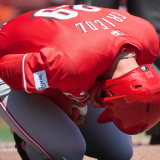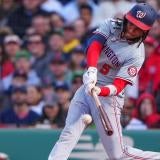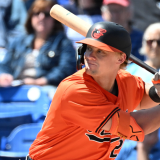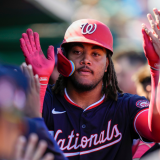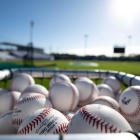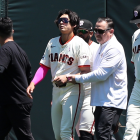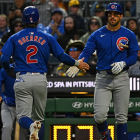Going into 2020, the biggest question in baseball is not whether Gerrit Cole and Mookie Betts put the Yankees and Dodgers on a World Series collision course, or how the Astros respond to the sign-stealing scandal. The single biggest question in baseball is about the baseball itself. How will it play, exactly?
Last season's lively baseball -- lively as in the seams were lower, creating less drag, and the leather surface was slicker -- led to a home run explosion throughout the league. There were 6,776 home runs hit in 2019, easily the most in MLB history. The previous record was 6,105 homers in 2017. Before that, the record was 5,693 homers in 2000.
Weirdly, the baseball appeared to change in the postseason. It was not quite as lively, and after being conditioned to expect pretty much every well-struck ball to carry over the fence during the regular season, it was a bit of a shock to see some balls get squared up and caught for outs in October. The baseball can vary not just year-to-year, but even month-to-month.
The Cactus League and Grapefruit League seasons are now a week old and, at least according to two pitchers, the 2020 baseball is different than the 2019 baseball. Specifically, the ball is a little softer, and the seams are a bit higher. Yankees right-hander Masahiro Tanaka says the current ball feels like the 2017 baseball (which was still pretty lively, of course).
Here's what Tanaka told NJ.com's Brendan Kuty:
"The one we're using right now is pretty similar to what we used in 2017," Tanaka said via his Japanese interpreter at George M. Steinbrenner Field on Wednesday. "But I'll remark here that, it's just how I feel."
Phillies right-hander Zach Eflin feels the same way. Here's what he told Jim Salisbury of NBC Sports Philadelphia:
"I think it's awesome," he said. "To me, they feel a little softer and you can definitely notice the seams a little more. Last year, it was like throwing a cue ball."
...
"The thing that was tough with last year's balls was the mud they use to rub them wouldn't stay on the baseball because it was so slick and hard," Eflin said.
For what it's worth, there have been 215 home runs hit in 108 games this spring, or 1.99 per game. Last spring it was 1,141 homers in 470 spring games, or 2.43 per game. During the regular season last year, fans saw an average of 2.79 homers per game. It's still very early in spring training, so we have to take the homer rate with a grain of salt. Hitters are still searching for their timing, after all.
Another thing to keep in mind: the spring training baseball will not necessarily be the regular season baseball, the same way the regular season ball was apparently not the postseason ball last year. "When you look back at last year, it feels like it was good in spring training and then it changed once the season started," Tanaka told Kuty. We won't know how the regular season ball will play until the regular season.
Major league baseballs are still handmade by Rawlings and, according to MLB, the ball can vary wildly while still remaining within the league's specifications. In December, a committee of outside experts released a 27-page report concluding last year's home run rate could be attributed to inconsistent seam height and also hitters embracing launch angle (i.e. trying to hit more homers).
"No evidence was found that changes in baseball performance were due to anything intentional on the part of Rawlings or MLB and were likely due to manufacturing variability," the committee concluded in their report. It's unclear whether MLB and Rawlings will tighten up their specifications to create a more consistent baseball, or even automate the process.
For now, this year's spring training baseball has higher seams and is softer than last year's, at least according to two pitchers. How the baseball -- the single most important piece of equipment in the sport -- will play during meaningful regular season (and postseason) games remains a mystery.







